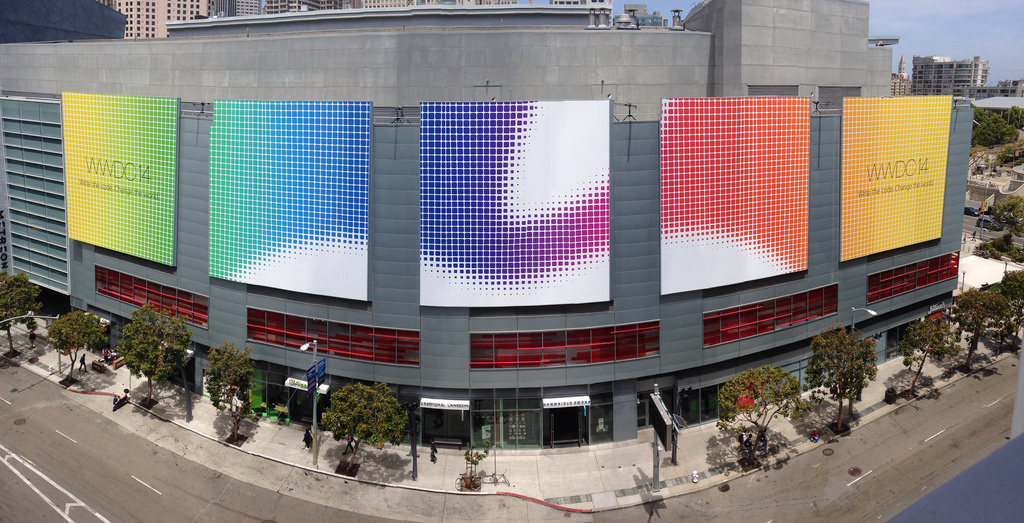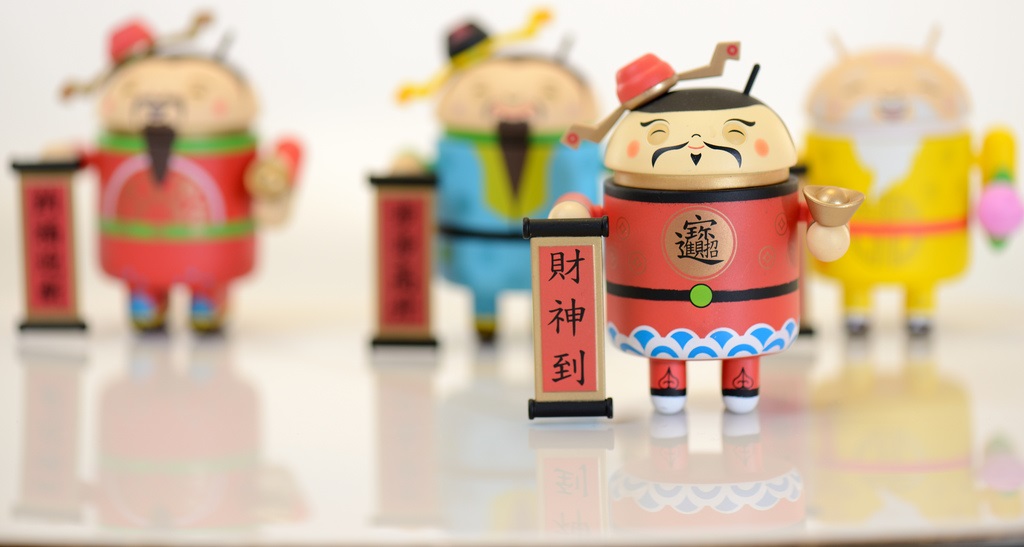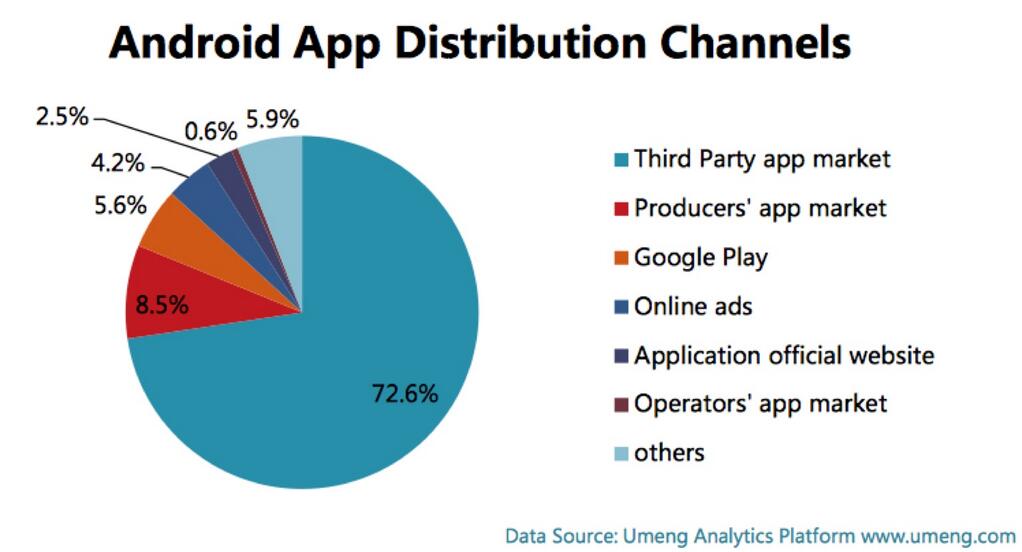
Apple’s Worldwide Developers Conference has wrapped for another year. Much of the coverage has centred on the big three announcements – iOS 8, Mac OS X Yosemite and Apple’s updated suite of developer tools – however the event itself was not spared from commentary and analysis.
One such piece that caught my eye was by Elliot Kotis for Ausdroid, a local spin on a article run by Phandroid earlier in the week. Each focused on Apple’s notable and out of character inclusion of Android in Tim Cook’s keynote address.
“… the funniest part of [WWDC] is watching Apple try to claw down the ever rising Android with thinly veiled jabs and often mis-interpreted statistics.”
– Elliot Kotis, Ausdroid
Today, I plan to have a more detailed look at the statistics that both Cook & Co and the Ausdroid-Phandroid coalition have presented. Then, I hope to help illustrate that when it comes to mobile, it’s more important to look at the bigger picture than to focus on the minutiae of a he said-she said statistics game.
From the outset, though, I feel as though I should make one thing clear – I don’t buy into any of that fanboy stuff. I like to think that I’m about as platform-neutral and device-agnostic as one can be. I own an Android phone, an iOS tablet, use a Windows 8 laptop at work and a Mac laptop at home. I’m a firm believer in choosing the best tool for the job and nothing more.
On Customer Satisfaction
“…the percentage of customer satisfaction when leaving Android for iOS, was around 97%. Seems a bit desperate trying to get people to move…but thanks for the mention!”
– Elliot Kotis, Ausdroid

Now, I remembered the 97% statistic from the Keynote slide, and I remembered Cook referencing a number of Android switchers, but I don’t remember the two being related. After going back to the Keynote video [45:34] for another look, this repeat viewing confirmed that they were indeed presented as two separate thoughts.
Apple claim to have added around 130 million new, first-time-to-Apple customers, and that 50% of their iPhone additions in China were from Android phones. When it came to the customer satisfaction metric however, this was for iOS 7 only—not indicative of the Android switchers.
Apple cited ChangeWave research as the source for this number, and the executive summary of ChangeWave’s April 2014 Consumer Smart Phone Trends report indeed lists “OS Satisfaction Ratings” as an item. With a sample size of over 4,000, I have no reason not to trust the results as true, honest and representative.
Unfortunately I couldn’t track down a copy of this specific report to verify the number. What I did get my hands on was YouGov’s March 2014 “SMIX” – Smartphone, Mobile Internet eXperience report. It looked at the opinions of around 4,000 UK-based smartphone owners.
While it’s not a direct parallel for customer satisfaction, 85% of the report’s iOS-using respondents would purchase an iOS-based phone again. Android—being no laggard itself—will capture 66% of its current users next time around.
On overall device satisfaction (that is, as a complete package of hardware and software), the iPhone collects a rating of 83.4%. When the two Android brands polled (Samsung and HTC) are combined, they collect a rating of 77.7%. Certainly nothing to sneer about either.
With these numbers in hand, how do I rate Tim Cook’s 97% stat?
Verdict: Believable, but possibly exaggerated.
On Mobile Malware
“…and they don’t get security updates that they may need to stay safe. And this is particularly important for Android, which dominates the mobile malware market.”
– Tim Cook

Before looking at the implications of such a staggering figure, I wanted to ensure that we were dealing with a number that was accurate. After all, the previous claim only managed “believable” and not “confirmed”, so it’s only fair to approach this statistic with a raised eyebrow.
SecureList’s Mobile Malware Evolution: 2013 report attributes 98.05% of mobile malware to Android. The remainder is attributed to legacy Symbian OS threats, some Java nasties and a negligible 0.13% falling at the feet of “Other” – a mantle I assume iOS shares with Windows Phone and BlackBerry OS.
More alarmingly, both Symantec’s October 2013 Mobile Adware and Malware Analysis and McAfee’s February 2014 Mobile Security Report forego any reporting on the numbers and focus entirely on the situation with Android. The threats to other operating systems are so negligible that they don’t even warrant the column inches.
“Ah, but Kieran,” you say, “they don’t sell an anti-virus app on other mobile platforms! Why would they bother to scare you about a problem that they can’t sell you a solution to?”
Exactly.
Money talks, and you can be sure that if there was a valid market for tightly integrated anti-virus on a mobile operating system other than Android, firms such as Symantec and McAfee would be all over it like white on rice.
The claim that 99% of mobile malware targets Android?
Verdict: Myth confirmed.
“But there’s something to be said about plucking obscure numbers out of the air in selective fashion while dodging the ones that truly matter — Android’s 79% of the global smartphone market share as of January 2014.”
– Quentyn Kennemer, Phandroid
This argument of “security through minority” (sometimes coined “security through obscurity”) is that iOS—like Mac OS in the past—is not worth targeting because it has a low market share. Modern malware developers have long since moved away from wreaking indiscriminate havoc; their energies are now spent trying to siphon money away from their marks.
While there are a lot of Android users out there, Android’s greater accessibility means that they may not be the best target for those on the hunt for dollar-dollar bills. This becomes especially apparent when you look at the mix of iOS vs Android devices in developed nations; countries flushed with cash and ripe for the picking when it comes to cash-sucking malware.
The iPhone commands a smartphone market share of 32.1% in the United Kingdom, 41.6% in the USA, and 35.1% in Australia. These are not insignificant numbers.
When you couple the higher ticket and tariff price for an iPhone, and a number of studies suggesting iPhone users have more disposable cash to drop on purchases, any schmuck malware developer would be an idiot to ignore such a large, tasty slice of action.
I am by no means a security expert, but I can tell you that by specific design, there are fewer attack vectors on iOS than there are on Android. Through “security by design”, iOS offers more robust permissions control and goes to great length to ensure that rogue code in one application cannot impact the OS or other applications.
The suggestion that “only” having 15.6% market share precludes iOS from taking on its fair share of mobile malware?
Verdict: Baloney.
On Software Updates
“And if you looked at a broader group, over a third of their customers are running a version of Android from four years ago.”
– Tim Cook

Ah, here’s the comment that really got people’s goats, but I think they rather missed the point. Let’s not beat around the bush here, in this comparison less than 1 in 10 Android customers have access to the latest version of software. However many articles instead seized on the remarks made by Cook and chose to play a game of semantics.
To fully understand the accuracy of this claim we first need to know when Apple pulled these statistics for their slide. Thankfully, Google publish their platform distribution numbers monthly, and using some historical data, we can determine that Google reported 8.5% of their customer base using KitKat in April of 2014. With a bit of generous rounding, we’ve landed on our 9% figure and identified the month in which it’s from.
So which version of Android is from four years ago? Gingerbread.
Just.
Android 2.3 Gingerbread was first released in December 2010, and superseded by Ice Cream Sandwich in October 2011. While Gingerbread is indeed a 3.5 year old operating system, the phrase “from four years ago” simply implies to many that it was released in 2010. Which it was.
But – let’s be completely clear here, even if you take into account a number of Gingerbread updates released during 2011 as falling into that broad category, they only account for 16.2% of Android customers in April of 2014.
How do I rate the claim that over a third of Android customers are stuck on an operating system from four years ago?
Verdict: Super-baloney. But there’s a catch.
A catch, you say? Well yeah — let’s be generous and tweak Tim’s comment slightly so that the numbers add up.
“…over a third of their customers are running a version of Android from three years ago or earlier“
– Factually Correct Tim Cook
Ouch.
But, as Quentyn at Phandroid is quick to point out, any device running Gingerbread or above can take advantage of Google Play Services. What is Google Play Services? It’s Google’s end-run around the difficult-yet-necessary, industry-wide (yes, even Apple goes through it) process of carrier-vetted software updates.
“He bent the truth a little by claiming that those on older versions of Android don’t get new features. We all know that’s not quite true considering Google has a habit of delivering new features using apps and updates to Google Play Services“
– Quentyn Kennemer, Phandroid
It’s also Google’s way of making Android that little bit less Open Source.
But, there exists hundreds of millions of devices out there that ship with a forked version Android or straight AOSP, devoid of Google Play Services or indeed any Google services at all. When we consider this dichotomy of Android devices and Google Android devices, how was the oft-quoted 79% market share figure arrived at?
Well, it includes China. And that’s becoming a bit of a problem for Google.
The China Problem
“Using the word ‘Android’ to describe these devices is somewhat problematic. The great majority of them come with no Google services: no Google Maps, no Google Play and no Gmail or Google Calendar. These cannot be installed by the user either, without a great deal of fiddling with ROMs. Google Search is of course largely blocked in China, and those devices that do have Google Play can only download free applications: purchases are not supported.”

For all the praise that is often lumped upon Google for the success of Android, many ignore the very real, and rapidly growing “problem” of non-Google Android in developing nations like China and India.
These devices have no access to any of Google’s services, ship with their own app store, and contribute nothing to Google’s efforts to improve their services or their bottom line.
Conversely, every single device Apple sells delivers cash directly to its bottom line. It’s why in Q3 of 2013 they raked in 53% of all profits in the entire smartphone industry.

While considering the China Problem let’s look back at some of the criticisms raised against Tim Cook’s shots at Android. While cannot be sure that they were necessarily intended to apply to the Android market as a whole, they bear further investigation. Was he talking about Android? Google Android? AOSP? A mix? We just don’t know.
On Mobile Malware
Noise was made regarding Google Android’s built-in protections:
“But, Google has taken many steps to avoid malicious Apps within Google Play and in the Android eco-system as a whole over the last year or two. First they introduced Bouncer, to scan apps uploaded to Google Play and then added additonal layers of on-device security such as app scanning. And it seems to be working, Android’s security chief Adrian Ludwig, last year released statistics showing that from a sample of 1.5 Billion downloads of Android Apps less than 0.001% are able to evade their defenses and cause harm to users.”
– Elliot Kotis, Ausdroid
It is wonderful news that Google has implemented a range of procedures and processes to combat malicious applications on the Play Store. They will help to protect hundreds of millions of Google Android devices throughout the world.
However as evidenced by the graph above from Umeng Analytics, only 6% of Android users in China benefit from these protections. That’s 74.6 million Android phones shipped last quarter alone with absolutely none of these protections in place.
On software updates
Google can only report on platform distribution figures for devices which connect to the Play Store. How else would they know? But it does make me wonder what version of Android this TV streaming gizmo is now running, or even this glass meeting room door featuring a 7″ touchscreen.
It probably doesn’t matter, but the question of whether you classify these as “Android devices” or not will affect every other statistic you quote or criticise about Android.
If you want to claim that Android has a 79% global market share, you cannot then say that only Google Play-connected devices are worthy of being ranked for platform distribution, or considered to be safe from mobile malware, or are exempt from speedy software updates because of the move to Google Play Services.
This is one example of where it’s an all or nothing game.
The mobile market as a whole, however, is not. And that leads me nicely onto my final point.
Highlanderism
“Sure, Android’s popularity may be more about accessibility (namely, its ability to meet the price point of any budget) than anything else, but at the end of the day it really doesn’t matter how Android ascended to the throne: it only matters that it got there.”
– Quentyn Kennemer, Phandroid

“Highlanderism” – or the belief that “there can be only one” – is a term coined by former Angry Mac Bastard, Darby Lines:
“It’s rarely enough for a technology, product, or company to merely do well. It must utterly dominate any and all competitors. Similarly, the average technology nerd is all but incapable of accepting that someone might make a different choice than them.
Apple users are “fanbois” who only care about looks and don’t use their tech for “real” applications. Android users are “freetards” who just want something cheap and can’t appreciate the divine products that sprung, Athena-like, from Steve Jobs’ forehead et cetera, et fucking cetera.”
– Darby Lines, The Angry Drunk
Unlike some other technology-driven markets like TVs, cameras or stereos, there is no single mobile market.
In 2012, 50% of all smartphones sold in America were iPhones. Half of all mobile subscribers in Europe were on prepaid. And in China, the sweet-spot for a smartphone purchase was around US$160.
Although there exists a global need for connectivity, the path to purchase, distribution model and the economy that develops around the sale of mobile phones radically differ between countries and regions.
They’re also completely divorced from the market for personal computers in both structure and scale.

The market conditions that allowed the ‘Wintel’ PC dominance to exist in the ’90s and ’00s simply do not apply to mobile phones.
That one chapter in the history of technology played out in a specific way, does not mean that history is duty-bound to repeat itself.
Sadly, this concept of Highlanderism invades much of the modern tech zeitgeist, often to the great detriment of all sides. So in closing, I’d like to pose a few questions:
Android fans – where would you be without Apple’s work with multitouch?
iOS fans – where would you be without Android’s work with manageable notifications?
Nokia fans – where would you be without Microsoft’s work with Windows Phone?
And all of you – where would you be without Danger Inc’s pioneering work with nearly every modern smartphone paradigm?
The answer to all of these is “in a much worse place than today”.
When it all boils down to it, robust competition in a rapidly accelerating and rapidly innovating industry benefits everybody. The steadfast belief that there can only be one true victor in the smartphone thunderdome benefits nobody.
There is no one true path to enlightenment when it comes to which mobile phone people use. No more than there is one true path to enlightenment when it comes to which shampoo people use.
Don’t get stuck on the lies, damned lies and statistics. Just be happy that somebody out there is still coming up with new, amazing ideas.
It’d be a pretty shitty world if they weren’t.
Disclosure statement: Kieran is employed as a product manager for Three, a mobile network operator in the United Kingdom. However, he writes for Reckoner in an explicitly personal capacity.
Header image credit: Brian Brantner, Flickr. Licensed under Creative Commons Attribution 2.0.
“The China Problem” image credit: yuyang226, Flickr. Licensed under Creative Commons BY-NC-SA 2.0.